by Caroline
A lifetime ago, pre-husband and pre-kids, I lived in the not-yet-gentrified Hayes Valley neighborhood of San Francisco. My top floor apartment looked out over a vacant lot which had once been shadowed by the 101 freeway off-ramp, but after the Loma Prieta earthquake damaged the road, the ramp was torn down and the lot — in all its weedy, broken-asphalt ugliness — was exposed to new light. The weeds started growing denser and scrubby trees started to sprout; the lot was surrounded by chain link fence, but that didn’t stop people from camping in it. I used to sit in my window looking out over the space, wondering if the city would ever pay attention to the lot and make better use of the area.
The rest of the neighborhood started improving; hip shops and cafes moved in, and although I moved away, I’d drive past frequently on my drive to graduate school in Berkeley. Eventually a sign went up on the chain link fence, announcing a condo development, but nothing happened. Then last winter, a new sign went up, and then lots of new signs:
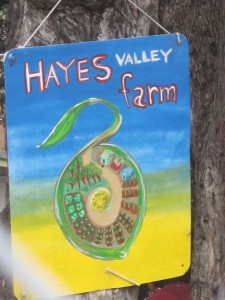
We had to go see it.
We love to visit farms. We tend our own little garden in the backyard and for inspiration we have visited farms on the prairie and on the coast and even one tucked behind a suburban development.
I discovered that when the condo development plans fell victim to the recession, the city opened the site up for “temporary green space use” and the community has taken it from there. On our visit, one group of folks sorted through packets of donated lettuce seed to plant out in flats:
We planted some of it in flats ourselves:
And we admired the healthy salad bar that’s growing from seeds planted earlier in the season:
We saw another group sorting and stacking cardboard, some of the over 80,000 pounds the farmers have used already to create the farm’s “soil” out of layered cardboard, wood chips, and horse manure:
The ingredients for soil (like the seeds) are donated; the community farmers collect the cardboard, wood chips and manure free and with the city’s thanks, from the local waste stream.
These folks are serious about their farming. They are developing dwarf fruit trees that thrive in pots, so that apartment dwellers can harvest their own apples and pears:
They are refining potato columns, which grow in simple, portable chicken wire towers and yield lovely potatoes that my kids couldn’t resist harvesting:
“It’s really not scary to grow food,” commented our tour guide; indeed, for all their innovations here, they are also doing some things in ancient ways, studying the terraced farms of the Incas because San Francisco’s climate mirrors that of the Andes mountains.
The farmers are making it fun, too, hosting volunteer work parties followed by free yoga sessions, movie nights and picnics, plus classes on topics ranging from medicinal plants to soil health to permaculture to emergency preparedness. “The main thing we’re growing is a community,” our guide commented, and it’s growing beautifully. It’s like turning swords into plowshares: the Hayes Valley volunteers are farming the freeway:


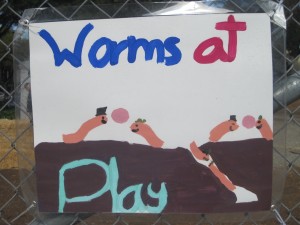

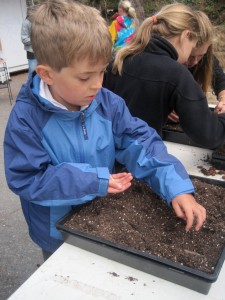

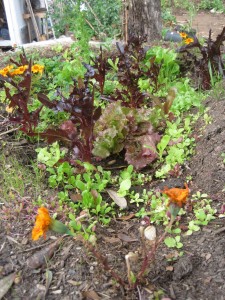


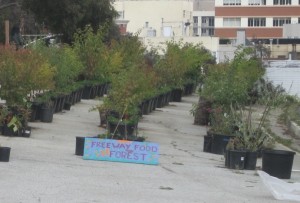
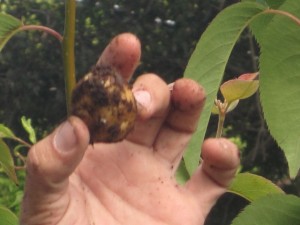
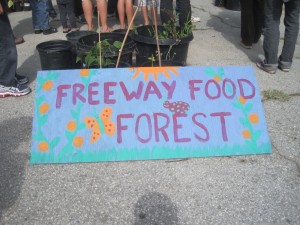
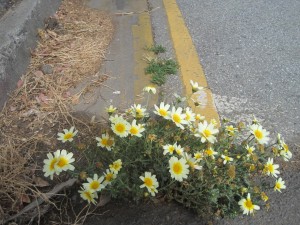
Chris
September 22, 2010 @ 11:25 pm
Thanks for the lovely article. We hope you have a bounty of success in your backyard and continue to look out for us whenever you’re in and around the city.
Take care!
-Chris
http://www.hayesvalleyfarm.com/